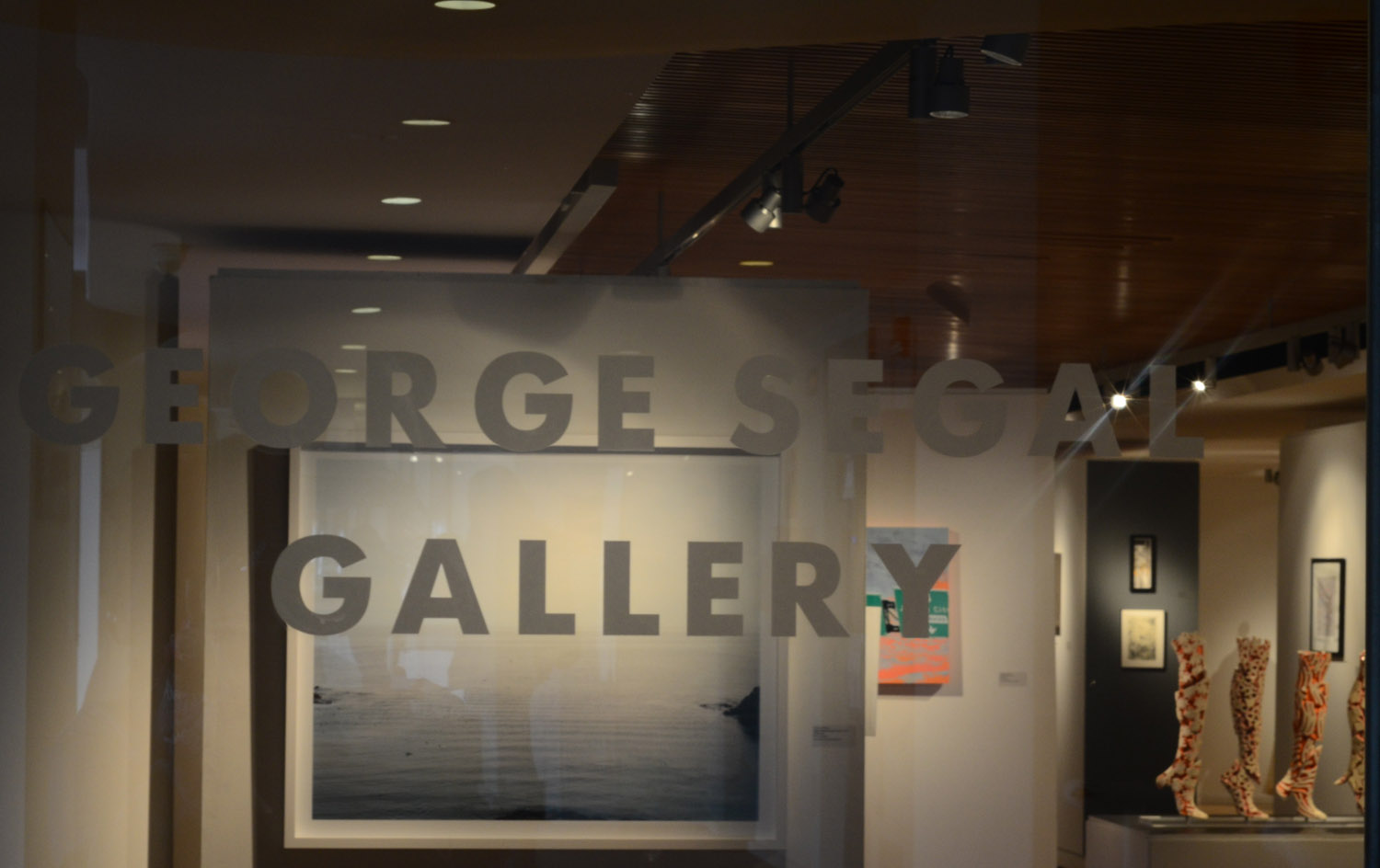
Bali, 1992. Archival pigment print, 24 x 19 7/8 inches Montclair State University Permanent Collection Gift of David Ganz and Dina Cagliostro, 2014.002.004
Photo courtesy of Sally Gall
The art of a single photograph seems to be lost in an age when a person can take 100 photos of themselves in the bathroom mirror. However, in Montclair States’s newest exhibit in the George Segal gallery, the public can take a look at photography before the selfie age.
Your eyes are drawn to the striking, but serene, black and white nature photography of Sally Gall and Lucien Clergue when you first walk in. You see shots of George Segal at work as you move through the gallery.
David Lokuta’s pictures show rare photos of Segal’s artistic process creating the campus’ iconic sculpture, “Street Crossing,” that resides permanently outside of the gallery. During the process, you can see Segal at work, making the casts of the models for his work of art.
One of the highlights of the showing is the inclusion of the famous artist, Andy Warhol, who is known for his iconic pop art of the Campbell’s soup cans and Marilyn Monroe. In this exhibit, people can get a look into the other side of Warhol’s work.
The gallery includes up-close and personal Polaroids of unidentified men and women and photographs of celebrities, such as Liza Minnelli and John Travolta, that, out of context, make them seem like average people doing everyday things.

Bali, 1992. Archival pigment print, 24 x 19 7/8 inches Montclair State University Permanent Collection Gift of David Ganz and Dina Cagliostro, 2014.002.004
Photo courtesy of Sally Gall
An interesting inclusion to the exhibit was the display of old-fashioned film cameras from the 1970s. The oversized, clunky model of the Polaroid Big Shot camera shows just how far photography has come. Every moment is now easily captured digitally when, back then, certain moments had to be deemed worthy enough to be kept on an analog piece of film. This is what this show is about: the immortality of photographs and how a single moment “Then” is now captured and preserved for the “Now.”
Skillfully curated by Professor Mimi Weinberg, the exhibit is functioned to view photography as a phenomenon and is separated into four categories: “Snapshots,” or visual diary entries such as the Andy Warhol Polaroids, “Sketches,” or photos of the artistic process at work like the photos by David Lokuta, “Pictures,” that enhance the subject of the photo like the shots of the Queen Anne’s lace by Sally Gall, and “Documents,” which depict ceremonies and objects used in them including traditional African masks and a display of photojournalistic shots of them in action being used by the people who made them.

Plage de Camargue, 1964 Archival pigment print, 19 7/8 x 15 15/16 inches Montclair State University Permanent Collection Gift of David Ganz and Dina Cagliostro, 2012.002.001
Photo courtesy of Lucien Clergue
“Between Here and Then” is on view now until Dec. 17, and can be seen at the George Segal gallery, located in the Kasser Theatre. The gallery is open to the public free of charge Tuesday, Wednesday, Friday and Saturday 11 a.m. – 6 p.m. and Thursday 12:30 – 7:30 p.m.



